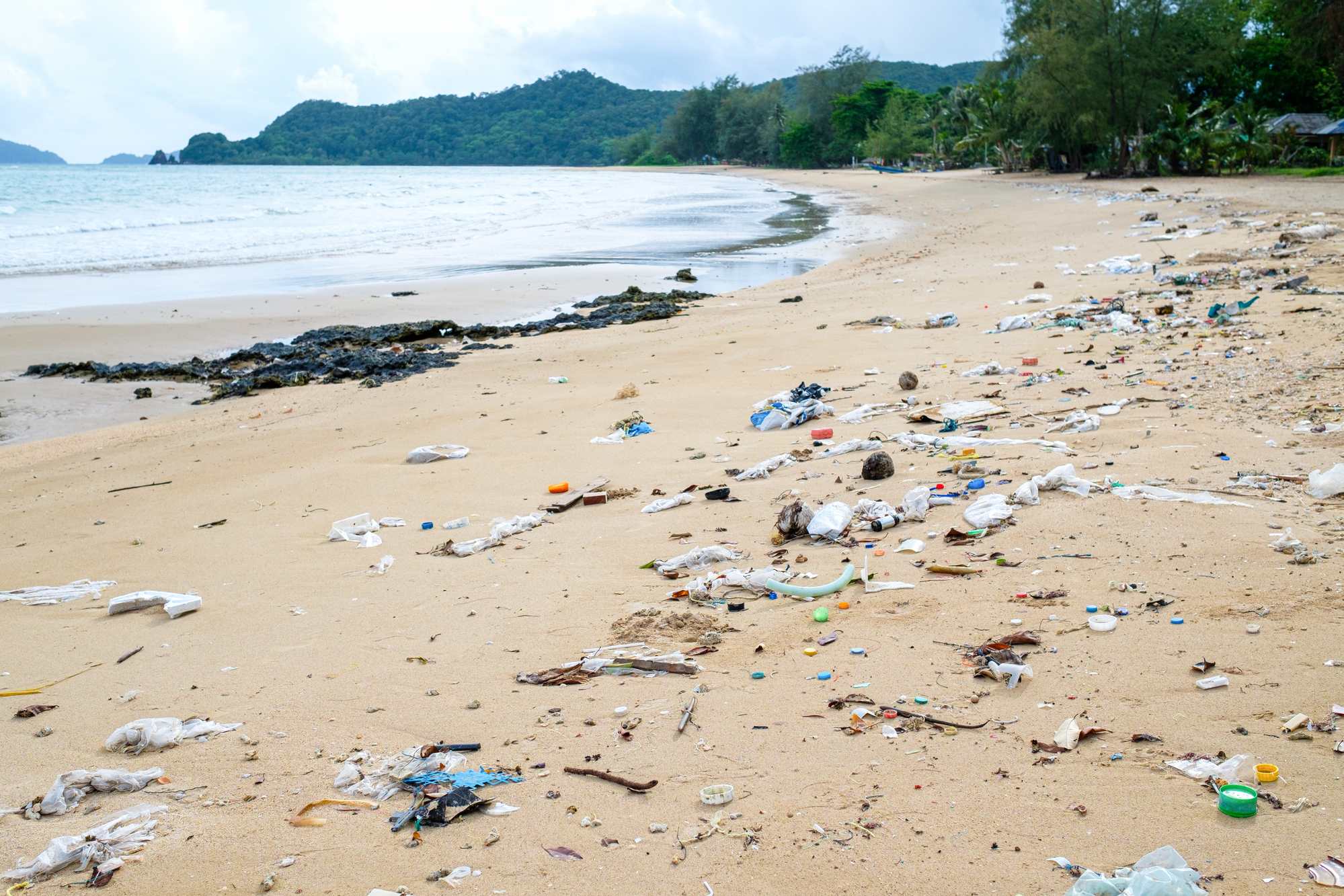
Plastic pollution is one of the most pressing environmental crises of our time. Despite widespread efforts to combat this issue through recycling, the very process meant to help is instead contributing to pollution. A growing body of research highlights how plastic recycling releases harmful microplastics and nanoplastics into our air, water, and soil, impacting ecosystems and human health. As we delve into the complex realities of plastic recycling, it becomes clear that current solutions are not only insufficient but also potentially harmful.
The Basics of Plastic and Microplastic Pollution
Plastic is derived from crude oil and various additives to give it unique properties like flexibility, durability, or transparency. However, these same chemicals make plastic inherently hazardous, flammable, and difficult to break down. When plastic degrades, it releases microplastics (particles smaller than 5mm) and nanoplastics (even tinier particles, often less than 1,000 nanometers) into the environment. These particles permeate nearly every corner of our planet, including our bodies.
The implications are profound. Microplastics have been found in the air we breathe, the water we drink, and even in human breast milk and placenta. As plastic production has doubled since 2000, so too has the prevalence of these pollutants, posing a serious threat to environmental and human health.
The Hazards of Plastic Recycling Facilities
Although recycling is widely promoted as a solution, evidence suggests that plastic recycling facilities may be doing more harm than good. Research published in Science and other journals indicates that recycling facilities emit significant amounts of microplastics during the processing of plastics. Here’s how:
- Fragmentation Through Shredding: In recycling facilities, plastic waste is shredded into smaller pieces to facilitate processing. However, this shredding process itself generates microplastics that can escape into the air and water. Since filtering out these particles is technologically challenging, many of these microplastics end up contaminating surrounding environments.
- Water-Based Washing Processes: Recycling plants use water to wash plastic waste. This process dislodges even more micro- and nanoplastics, which are subsequently discharged into water systems as liquid trade waste. These particles are too small for conventional water treatment facilities to filter, meaning they often end up in rivers, oceans, and ultimately, our drinking water.
- Hazardous Materials: Plastics like PET, HDPE, PP, and ABS contain toxic chemicals that pose numerous health risks, including carcinogenic effects, reproductive issues, and cardiovascular disease. The recycling process can release these toxins into the air, leading to environmental and human exposure. Additionally, plastic dust created during recycling can be explosive under certain conditions, posing a further risk to workers and the surrounding area.
Environmental and Health Impacts of Microplastics and Nanoplastics
Microplastics and nanoplastics are unique pollutants because of their size, persistence, and ability to travel. Research has shown these particles can cause extensive harm across ecosystems and even in human bodies:
- In Wildlife: Animals mistake microplastics for food, causing physical injuries, digestive issues, and even death. These particles can also accumulate up the food chain, ultimately affecting human food sources.
- In Human Health: Microplastics can disrupt endocrine functions, which regulate hormones critical to growth, metabolism, and reproduction. Long-term exposure has been linked to issues like respiratory diseases and cancer. Since these particles are too small to remove from air and water systems, they represent a continuous health hazard.
- In Soil and Water: When microplastics enter the soil, they can harm plant growth by affecting root structures and nutrient uptake. They also act as carriers for toxic chemicals, which can leach into groundwater. Once in water systems, these plastics pose a long-lasting threat to aquatic ecosystems.
The Global Plastic Crisis: Insufficient Solutions and the Path Forward
Despite the global scale of plastic pollution, the regulatory measures addressing the issue are fragmented and inadequate. Current local and national policies lack the reach and enforceability needed to make a meaningful impact. However, the United Nations Plastic Pollution Treaty, set for its fifth and final round of deliberations in November 2024, offers a glimmer of hope. This treaty could lead to global commitments to reduce plastic pollution, enhance recycling standards, and promote alternatives to traditional plastic.
 Is Plant-Based Plastic a Solution?
Is Plant-Based Plastic a Solution?
As the world grapples with the dire consequences of plastic recycling, plant-based plastics, which are biodegradable, have emerged as a potential alternative. Unlike traditional plastics, plant-based materials can decompose naturally, reducing the long-term environmental burden. However, plant-based plastics are not yet widely available or cost-competitive, and more research is needed to confirm their safety and sustainability on a large scale.
Moving Beyond Recycling: Rethinking Plastic Use
Given the risks associated with plastic recycling, it’s clear that reducing plastic production and consumption is paramount. Steps we can take include:
- Reducing Plastic Use: Minimizing the use of single-use plastics and opting for reusable alternatives can reduce demand for plastic recycling.
- Investing in Safe Disposal and Alternatives: Support for plant-based plastics and innovations in biodegradable materials can help create sustainable, less harmful options.
- Implementing Stronger Regulations: Governments worldwide need to enforce stricter regulations on plastic production, usage, and recycling. Effective implementation of the UN treaty would be a significant step in curbing plastic pollution.
- Raising Public Awareness: Educating consumers about the hidden dangers of plastic recycling and the importance of reducing plastic use can encourage more responsible consumption habits.
Conclusion: An Urgent Need for Action
Plastic recycling is not the solution it was once thought to be. The release of microplastics and nanoplastics from recycling facilities means that each time we recycle plastic, we may be exacerbating the pollution problem. As research continues to reveal the hazards of microplastic pollution, it is increasingly urgent that we rethink our reliance on plastic and develop safer, sustainable solutions. The consequences of inaction are too great: irreversible environmental damage, threats to biodiversity, and serious health risks for future generations.
In the face of this plastic crisis, every effort counts. By reducing plastic use, supporting alternative materials, and demanding stronger regulations, we can work toward a cleaner, healthier future—one that no longer depends on the illusion of “safe” plastic recycling.
If you would like to know more about how the DH-Natural Medicine Clinic can help you, please call us now on
(02) 4854 0205
 Danuta Hulajko is a Naturopath, international speaker and the founder & practitioner at the DH Natural Medicine Clinic in the Southern Highlands .
Danuta Hulajko is a Naturopath, international speaker and the founder & practitioner at the DH Natural Medicine Clinic in the Southern Highlands .
Danuta specialises in Allergies, Anti-Aging, Auto-Immune Conditions, Cardiovascular Conditions, Female Reproductive, Long Covid, Menopause, Mould Toxicity, Skin Conditions, Stress and Insomnia and Thyroid Dysfunction.
References
https://www.science.org/stoken/author-tokens/ST-1733/full
https://www.sciencedirect.com/science/article/pii/S0048969723047150
https://www.sciencedirect.com/science/article/pii/S2214714424013072


